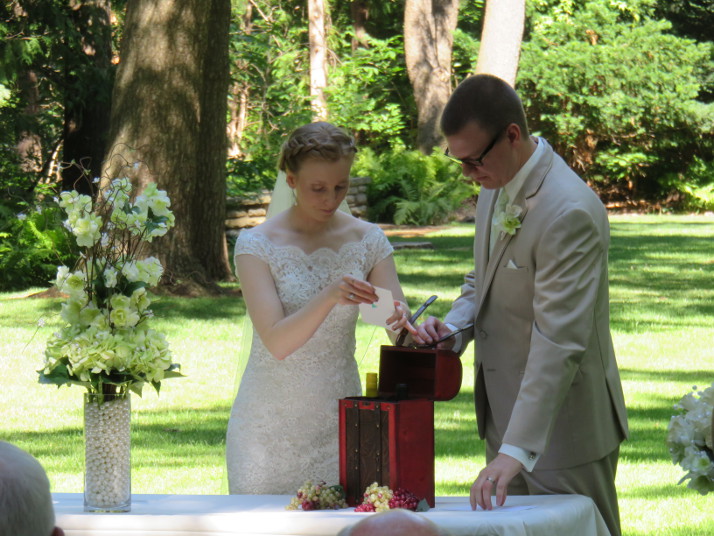Meaningful Unity Rituals
Meaningful unity rituals can add a memorable touch to your wedding ceremony. Along with your exchange of vows and rings, the unity ritual serves as a highlight of the ceremony when it is done well. So how do you ensure that your unity ritual is meaningful and significant?
Meaningful unity rituals serve a purpose. The purpose is to visually illustrate the vows you’ve just exchanged – blending your lives, joining your lives, becoming one, bringing your individuality to your marriage, and respecting each others goals and preferences can each be demonstrated with unity rituals. The more personal the ritual, the more meaningful it can be.
There are a few well known unity rituals – the unity candle lit from tapers representing your single lives now joining together, and the sand ceremony blending different colored sand showing the blending of your lives into one. They are fine, and if you like them, you should have them in your ceremony. There is another set of unity rituals gaining popularity including handfasting, love letters and tree plantings. They, too, should be part of your ceremony if you like the symbolism involved in them.

If you select one of the newer unity rituals, and especially if you have a unity ritual created just for you, it is essential that the symbolism and meaning be explained to your guests while you perform the ritual.
A story was shared with me regarding a recent wedding. There was a unity ritual, because the couple moved to a table and did something with dirt from two containers, but no one explained what exactly they were doing or what it was supposed to signify. That unity ritual was a failure from the perspective of the guests. Hopefully it had meaning for the couple, but because it wasn’t explained the guests felt left out and not respected. Maybe the soil came from their childhood homes and would be used to plant a tree outside their own home, thus connecting their histories and families. Or maybe they had gathered the soil on vacations they’ve shared and it represented their love of travel. Or maybe the soil represented the basis for their marriage – as the soil supports and nourishes a tree it surrounds, so will they work to support and nourish their marriage going forward. If the symbolism this ritual held for the couple had been explained, the guests would have understood it, would have learned about the priorities and focus of the couple, and the ritual would have become a significant part of the ceremony.
If you don’t like any of the “standard” unity rituals, or any of the “newer” unity rituals, and don’t want to explore the possibility of a personal unity ritual, that’s OK, too. Unity rituals are a totally optional part of the ceremony. I like them because they involve movement and action for the couple which is visually interesting, and if well explained, can add meaning to the ceremony. But they aren’t for everyone. You can choose to move from your exchange of vows and rings to the closing elements of the ceremony. Simple ceremonies can be lovely and can keep the focus on your promises/vows which can be very touching, too. Just remember to ensure meaningful unity rituals for yourselves and your guests if you choose to include them in your wedding ceremony.
